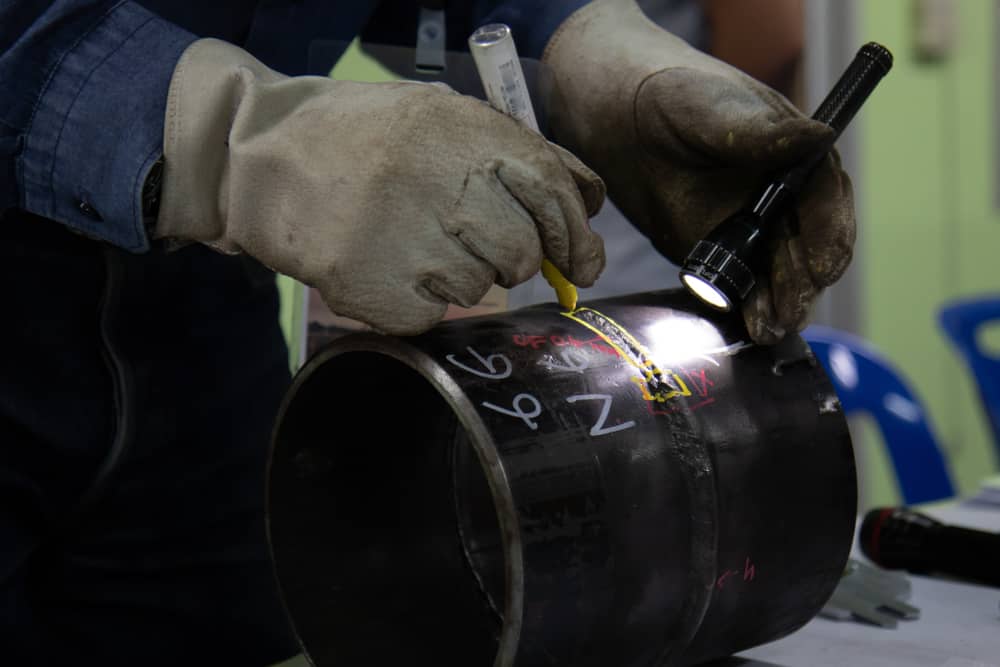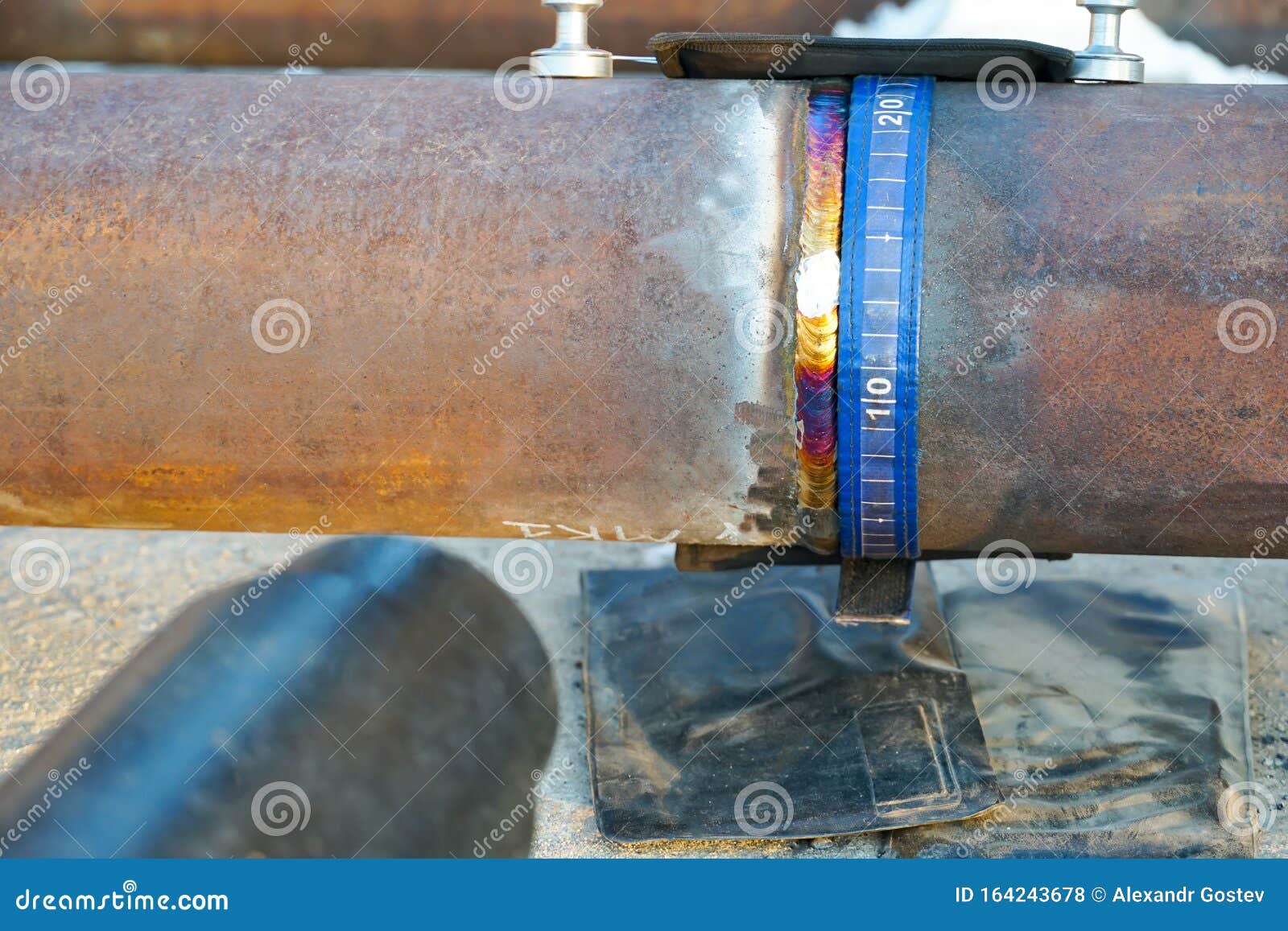Safety First: Comprehensive Pipeline Welding Inspection for every single Project Phase
Wiki Article
Making The Most Of Efficiency: Pipe Welding Assessment Finest Practices
By carrying out finest techniques for pipeline welding assessment, organizations can enhance procedures, lessen mistakes, and boost job timelines. The careful attention to information needed in welding inspection holds the crucial to the lasting longevity and reliability of the pipes, making it a subject of utmost relevance in the sector.
Importance of Efficient Welding Examinations
Effective welding evaluations play a crucial role in making certain the architectural stability and safety of pipelines. Correct inspections are necessary to determine any kind of flaws, suspensions, or blemishes in the bonded joints that might jeopardize the total honesty of the pipe system. By conducting thorough examinations, examiners can spot concerns at an early stage, preventing potential leaks, tears, or failures that might have serious environmental and safety effects.Timely and precise welding assessments also assist in maintaining compliance with industry standards and guidelines. Sticking to these requirements is not only a lawful need but also an essential step to guarantee the reliability and longevity of the pipelines. Moreover, reliable evaluations can add to cost savings by minimizing the requirement for costly fixings or substitutes because of welding issues that can have been avoided or dealt with throughout the evaluation procedure.
Using Innovation for Inspections
To enhance the efficacy and precision of pipe welding inspections, the assimilation of sophisticated innovations has become progressively important in making sure thorough and exact evaluations of bonded joints. Using technology for evaluations offers countless advantages, consisting of boosted effectiveness, boosted precision, and boosted safety and security measures. Among the key technological innovations in pipeline welding inspections is using automated ultrasonic testing (AUT) systems. These systems can check welds swiftly and accurately, supplying thorough information on potential flaws or issues within the weld joint. In addition, remote visual evaluation (RVI) devices such as robot crawlers geared up with cameras allow inspectors to gain access to and assess difficult-to-reach locations without the demand for extensive disassembly or hands-on treatment. The execution of computerized systems for information evaluation and reporting streamlines the inspection procedure, allowing real-time data analysis and smooth paperwork. By welcoming these technological remedies, pipe welding examinations can be carried out extra efficiently, leading to better welds, enhanced overall safety and security, and lowered job timelines.Establishing Clear Assessment Methods
Establishing clear inspection procedures is important for guaranteeing uniformity and integrity in the pipe welding assessment process. These methods offer as a set of standards that detail the details steps, criteria, and methods to be adhered to throughout examinations. By clearly defining the assessment procedures, all assessors associated with the procedure can recognize their duties and duties, bring about an extra standard and reliable inspection workflow.
Regular review and updates to the examination protocols are also vital to adjust to changing industry criteria and needs. By continually refining and improving the protocols based on responses and lessons learned, pipeline welding assessments can maintain the best quality standards and governing conformity.
Training and Accreditations for Assessors

Training and qualifications for examiners are vital in guaranteeing the proficiency and effectiveness of individuals entrusted with managing pipeline welding procedures - Pipeline Welding Inspection. Appropriately trained inspectors possess the needed understanding and abilities to efficiently assess weld quality, adherence to welding treatments, and conformity with industry standards and guidelines
Qualifications, such as those provided by the American Welding Culture (AWS) or the American Petroleum Institute (API), confirm an inspector's expertise and capacity to do evaluations to the highest standards. These certifications commonly need rigorous training, assessments, and recurring expert advancement to make certain that assessors stay current with the current developments in welding technology and inspection methods.
Along with official accreditations, continual training programs play a crucial function in improving assessors' abilities. These programs cover a broad variety of subjects, including welding processes, flaw detection, security protocols, and relevant codes and criteria (Pipeline Welding Inspection). By buying comprehensive training and qualifications for assessors, firms can promote the stability of their pipe welding tasks and reduce the threats associated with low-grade welds
Continual Renovation in Examination Processes
Building upon the structure of skilled and licensed inspectors, continuous improvement in evaluation processes is crucial for making certain the recurring quality and compliance of pipe welding operations. By executing a system of continuous improvement, pipeline welding assessment processes can develop to fulfill the changing needs of the industry, technical improvements, and governing demands. This involves frequently analyzing and examining inspection tools, procedures, and strategies to recognize areas for enhancement.One key element of continual improvement in evaluation procedures is feedback. Collecting input from inspectors, welders, designers, and other stakeholders permits an extensive analysis of current methods and the recognition of possible areas for improvement. Additionally, leveraging information and analytics can provide useful understandings into the effectiveness of assessment procedures, allowing educated decision-making for optimization.
Moreover, buying training and development programs for assessors can make certain that they are outfitted with the current knowledge and abilities to execute their responsibilities efficiently. Constant renovation is a vibrant procedure that needs dedication and commitment from all stakeholders to drive quality in pipeline welding assessment techniques.
Verdict
In verdict, making the most of performance in pipeline welding inspections is vital for guaranteeing the high quality and safety of facilities jobs. By utilizing innovation, developing clear methods, giving proper training and accreditations for examiners, and constantly boosting evaluation processes, companies can simplify their procedures and lessen threats. It is necessary for sectors to focus on effective welding inspections to maintain high criteria and satisfy regulative requirements.
Effective assessments can add to set you back financial savings by lessening the demand for pricey repair work or replacements due to welding defects that click now might have been protected against or fixed throughout the examination procedure.
Establishing clear examination methods is important for making certain consistency and integrity in the pipe welding evaluation procedure. By clearly defining the examination procedures, all assessors included in the procedure can comprehend their duties and functions, leading to a much more standardized and efficient examination operations.
Clear evaluation protocols help in lowering read what he said the chance of why not find out more errors or oversights during the inspection process.Structure upon the foundation of licensed and trained examiners, continuous renovation in assessment procedures is crucial for making certain the ongoing quality and conformity of pipe welding procedures.
Report this wiki page